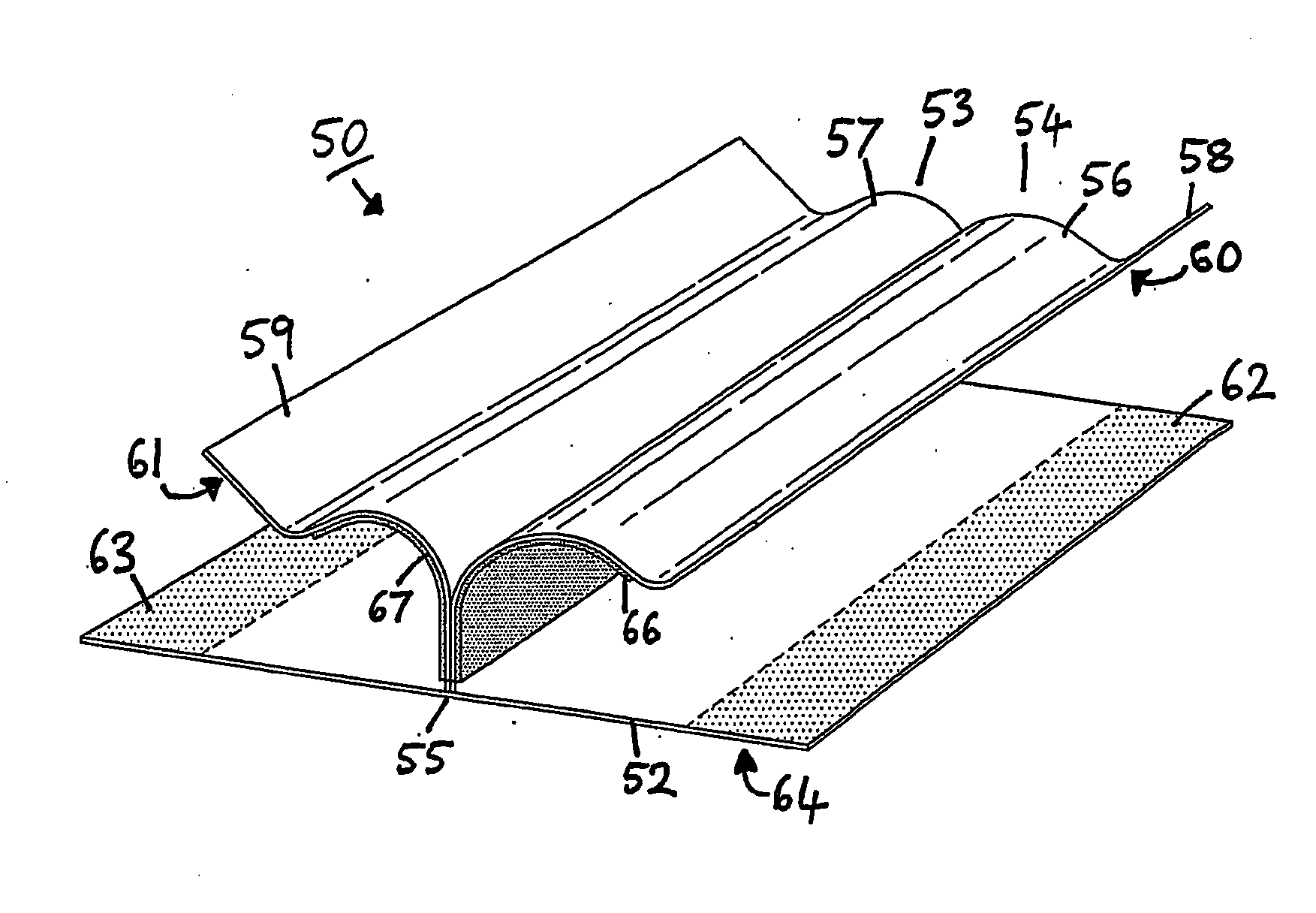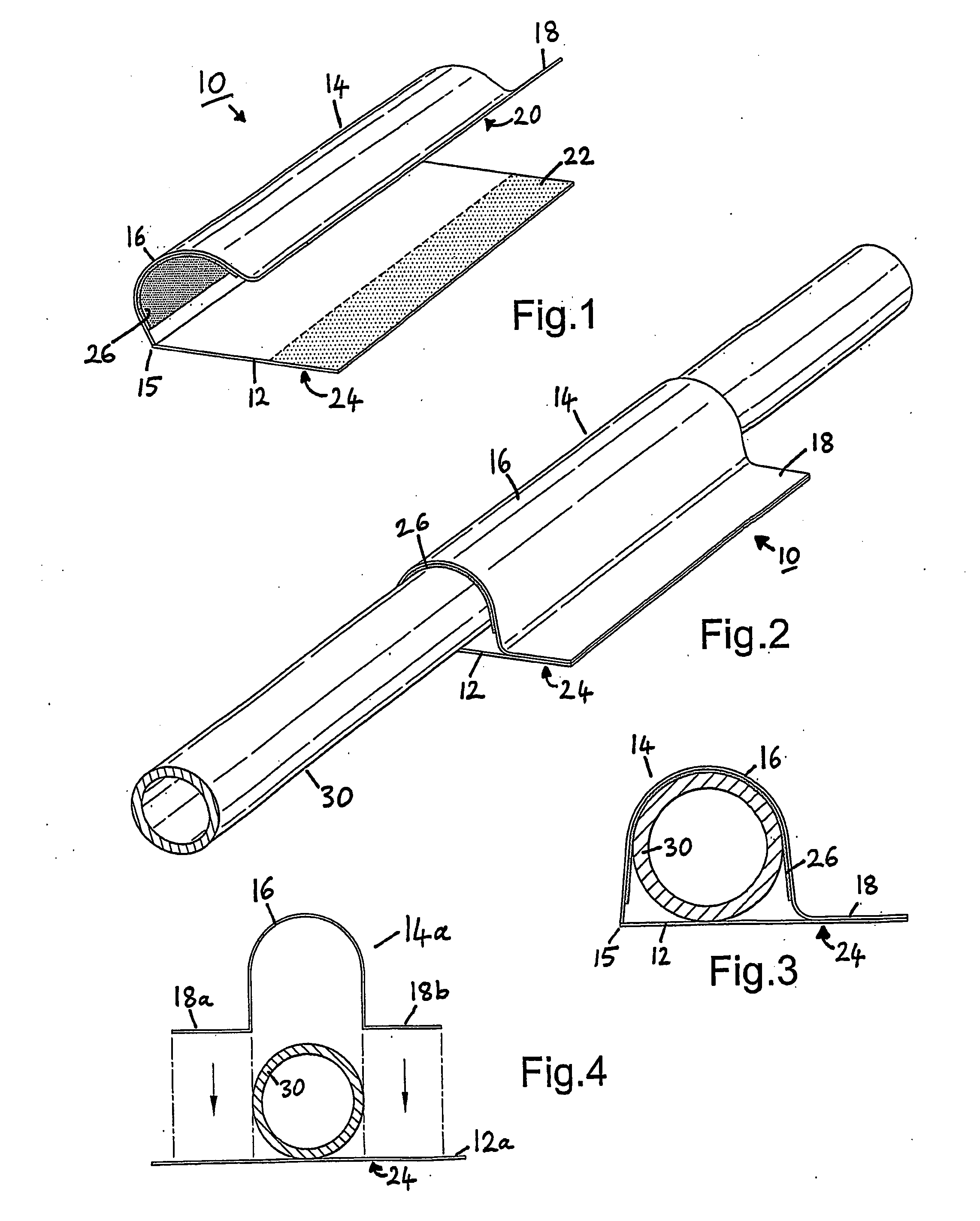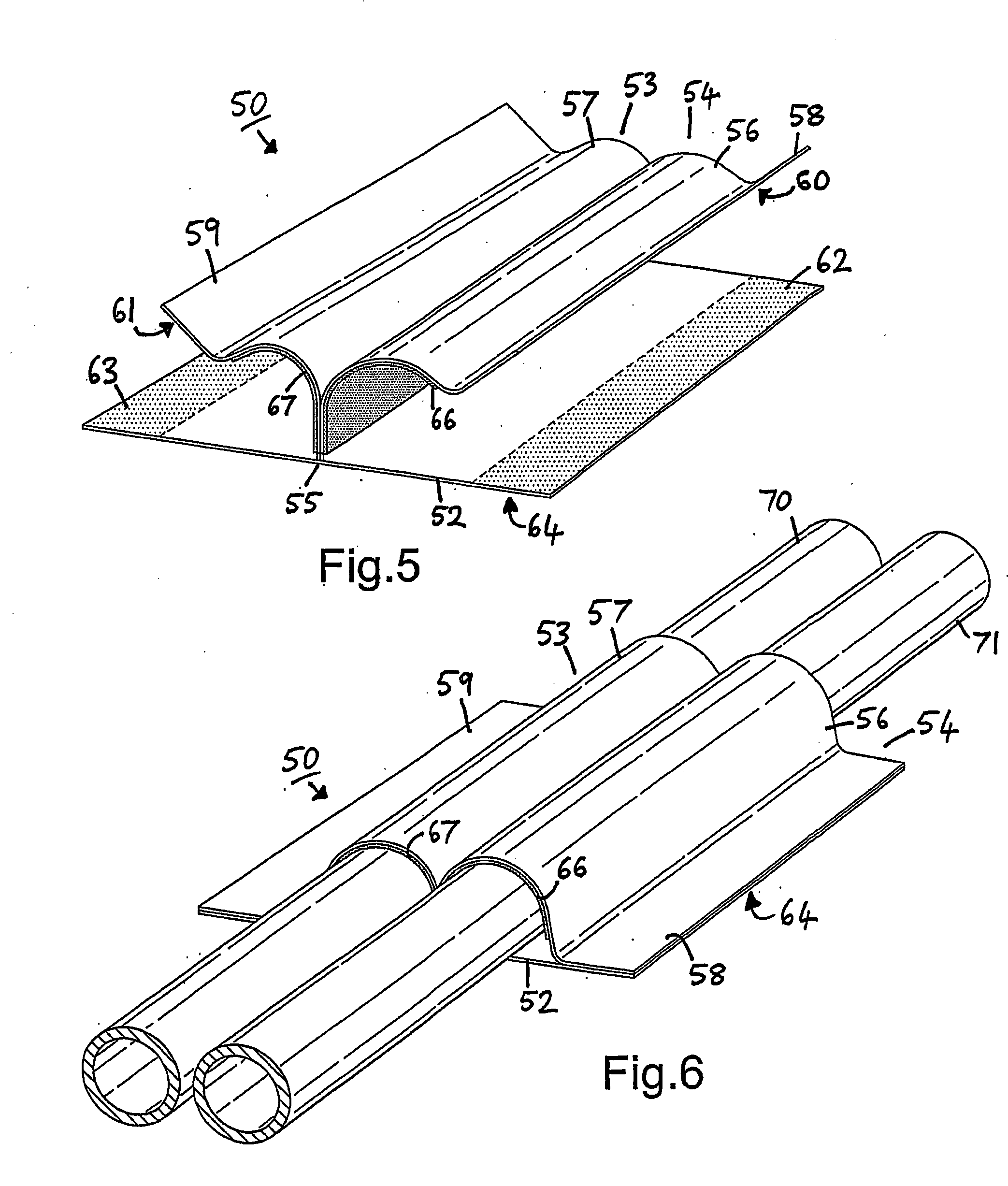Support devices for catheters
a technology for supporting devices and catheters, which is applied in the direction of intravenous devices, infusion devices, infusion needles, etc., can solve the problems of increasing the likelihood of infection around the catheter site, not being able to easily remove or reposition the catheter, and the patient's discomfort in the removal of the tape, so as to facilitate the application of the device to the patient, the effect of enhancing the grip
- Summary
- Abstract
- Description
- Claims
- Application Information
AI Technical Summary
Benefits of technology
Problems solved by technology
Method used
Image
Examples
first embodiment
[0048]FIG. 1 illustrates a support dressing or support device 10 for use with a single catheter tube. The device 10 comprises a base member 12 and a gripping member 14. In this illustrated embodiment, the gripping member 14 is pre-attached by a flexible fold, hinge or seam to the base member 12, such that the gripping member 14 may be closed onto the base member 12 in use.
[0049]The base member 12 is formed of a generally flat piece of material, which is preferably flexible, that is attachable to a patient's body in use.
[0050]The gripping member 14 is of the general form of a strap or cover, which is preferably flexible. The gripping member 14 comprises an attachment region 18, of which the underside 20 is attachable to the base member 12—for example attaching to region 22 of the base member. Between the end 15 and the attachment region 18, the gripping member 14 incorporates an intermediate region 16 that is adapted to wrap over a catheter in use.
[0051]As illustrated in FIG. 1, the ...
second embodiment
[0057]FIG. 5 illustrates a support dressing or support device 50, for use with a pair of catheter tubes. Here, the device 50 comprises a base member 52 and a pair of gripping members 53, 54. The gripping members 53, 54 are preferably made from a single piece of material, and are pre-attached to the base member 52 via a flexible hinge or seam region 55. The seam or hinge 55 may be formed by a line of stitching or adhesive, and is aligned parallel to the orientation of the catheters in use. The device 50 is substantially symmetrical about the seam or hinge 55.
[0058]The general features and principle of operation of the second embodiment are substantially the same as those of the first embodiment.
[0059]As with the first embodiment, the gripping members 53, 54 are preferably of the general form of flexible straps or covers. Each gripping member 53, 54 comprises a respective attachment region 59, 58, of which the undersides 61, 60 are attachable to the base member 52—for example attachin...
third embodiment
[0083]FIGS. 12 & 13 illustrates a support dressing or support device 130 for use with one or more catheter tubes.
[0084]Here, the gripping members 53, 54 are connected to either side of the base member 52. The gripping members 53,54 may be integral with or attached to the base member 52 via a flexible hinge or seam region.
[0085]The gripping members 53, 54 extend from protrusions on either side of the base member 52. As with the first and second embodiment, the gripping members 53, 54 are preferably of the general form of flexible straps or covers. However, the attachment regions 58, 59 are attachable to a patent's body.
[0086]In use, each gripping member 53, 54 is extended over a catheter placed on the base member 52 and then attached to the patent's body at the attachment regions 58, 59, as illustrated in FIG. 13.
[0087]As discussed previously, the gripping members 53, 54 are provided with intermediate region 56, 57 between the connection to the base member 52 and the attachment regio...
PUM
 Login to View More
Login to View More Abstract
Description
Claims
Application Information
 Login to View More
Login to View More - R&D
- Intellectual Property
- Life Sciences
- Materials
- Tech Scout
- Unparalleled Data Quality
- Higher Quality Content
- 60% Fewer Hallucinations
Browse by: Latest US Patents, China's latest patents, Technical Efficacy Thesaurus, Application Domain, Technology Topic, Popular Technical Reports.
© 2025 PatSnap. All rights reserved.Legal|Privacy policy|Modern Slavery Act Transparency Statement|Sitemap|About US| Contact US: help@patsnap.com



